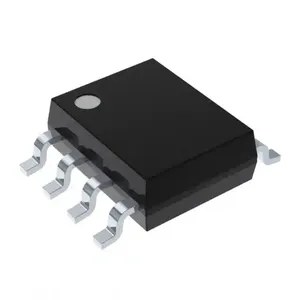Understanding LDR Circuits
Light Dependent Resistor (LDR) circuits are essential components in a myriad of electronic applications. These circuits utilize the unique properties of LDRs, which change resistance based on the amount of light falling on them. This makes them ideal for light sensing applications, automatic lighting, and energy-efficient devices. Let's delve into the different aspects of LDR circuits to understand their functionality and benefits better.
Types of LDR Circuits
LDR circuits can be categorized into various types based on their applications and designs:
- Voltage Divider Circuit: This is the most common type where the LDR and a fixed resistor are connected in series to create a voltage output that varies with light intensity.
- Light-Activated Switch Circuit: Used in applications where devices need to be switched on or off based on ambient light conditions, such as street lights.
- Analog Light Sensor Circuit: Provides a continuous output voltage that corresponds to light intensity levels, useful for feedback in automation processes.
- Digital LDR Circuit: Integrates microcontrollers to process light readings, enabling smart functionalities like IoT applications.
Function and Features of LDR Circuits
LDR circuits boast a plethora of functional features that make them invaluable to various technologies. Here are some notable characteristics:
- Photoresistive Properties: The key feature of LDRs is their ability to alter resistance in response to light, ranging from high resistance in darkness to near-zero in bright light.
- Ease of Use: They are straightforward to integrate into existing circuits; connecting an LDR requires minimal components and setup.
- Low Power Consumption: LDR circuits generally consume little power, making them ideal for battery-operated devices and extending their operational life.
- Responsive and Quick: The sensors can respond rapidly to changes in light, facilitating real-time monitoring and adjustments in automated systems.
Applications of LDR Circuits
LDR circuits find their application in diverse fields, ensuring efficient and innovative solutions. Here are some areas where they are prominently utilized:
- Automatic Lighting Systems: LDR circuits can turn on streetlights or outdoor lights automatically at dusk, enhancing energy efficiency and safety.
- Photography Equipment: Many cameras employ LDR circuits to adjust exposure settings based on ambient light conditions.
- Security Alarms: LDR circuits are used to activate alarms when light interference occurs, acting as a deterrent against unauthorized access.
- Electronic Toys: Many electronic toys integrate LDR circuits to detect light changes, providing interactive experiences for users.
Advantages of Using LDR Circuits
The adoption of LDR circuits comes with a range of advantages that enhance their appeal for both manufacturers and end-users:
- Cost-Effective: LDRs are relatively inexpensive, making them a go-to choice for budget-conscious projects and products.
- Versatile Design: Their simplistic design allows easy integration into a wide variety of devices and systems, catering to diverse needs.
- Enhanced User Experience: By automating light control, LDR circuits improve user interaction with devices while increasing convenience.
- Environmentally Friendly: These circuits foster energy-saving practices, reducing the carbon footprint associated with manual light management.









































































































































































































































